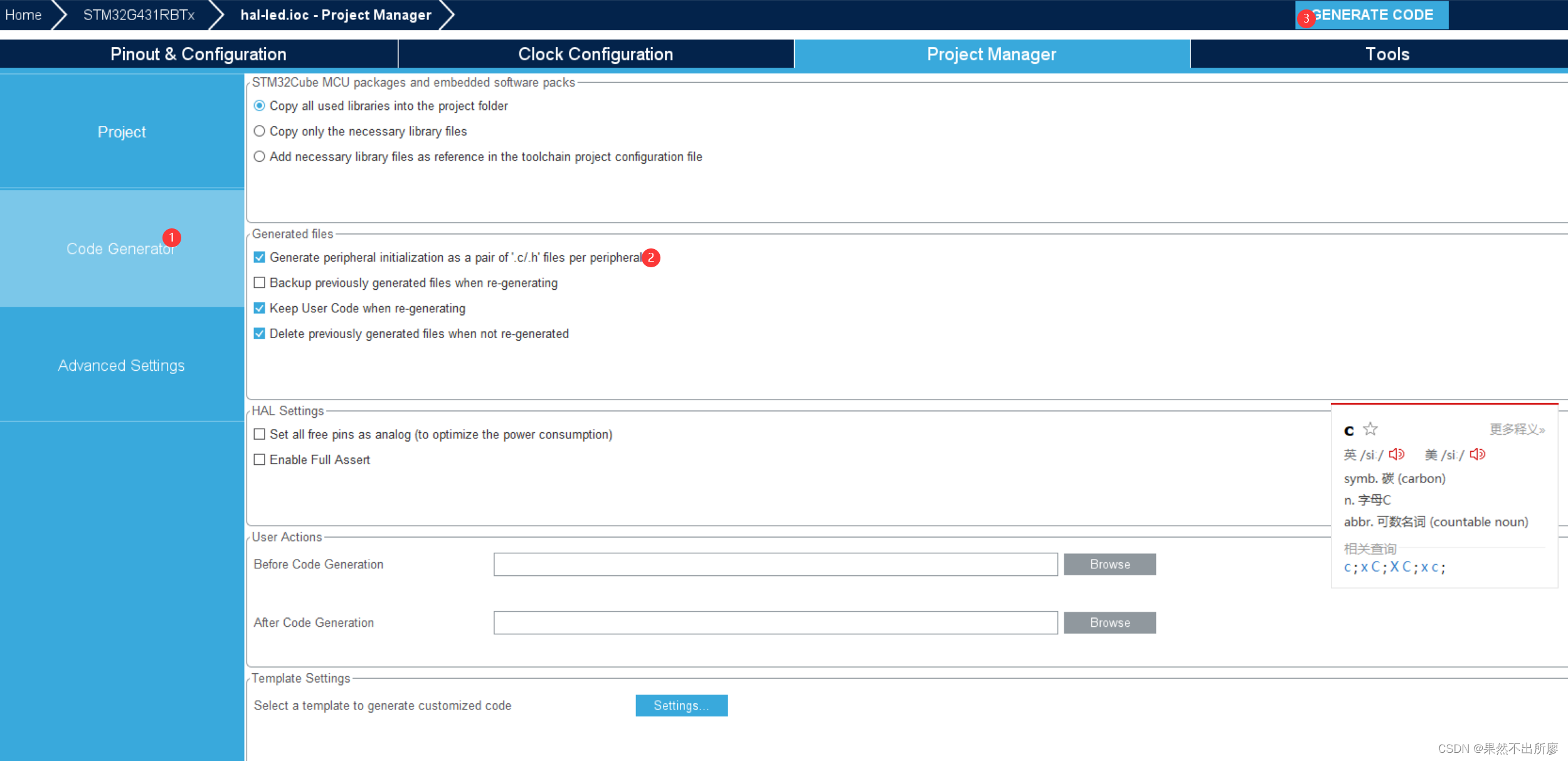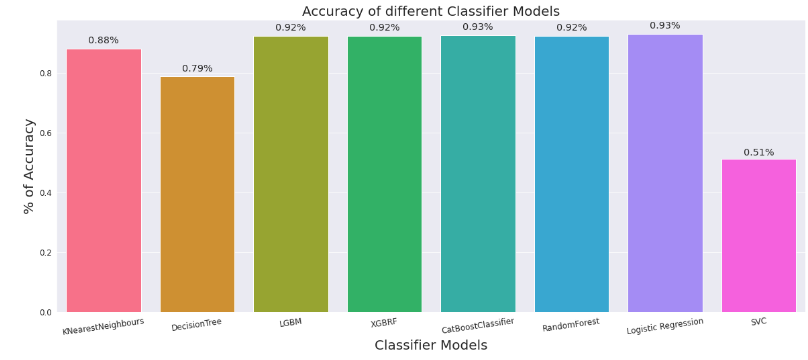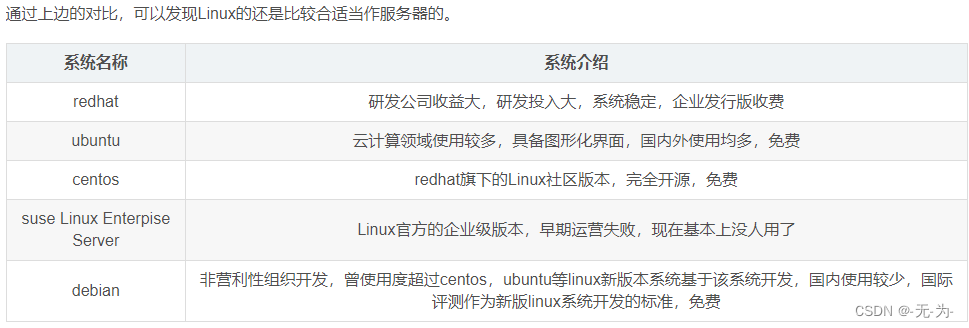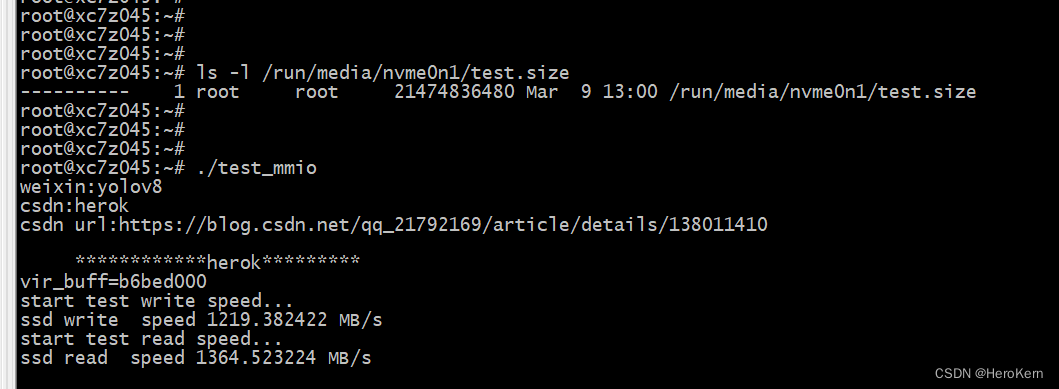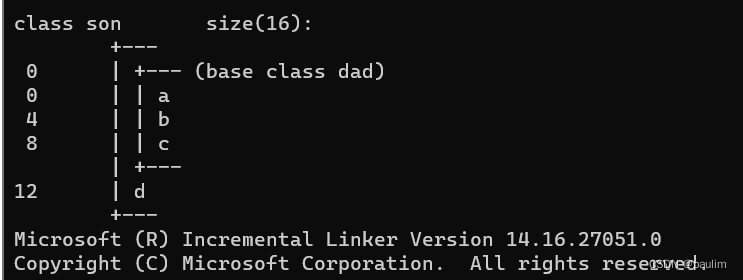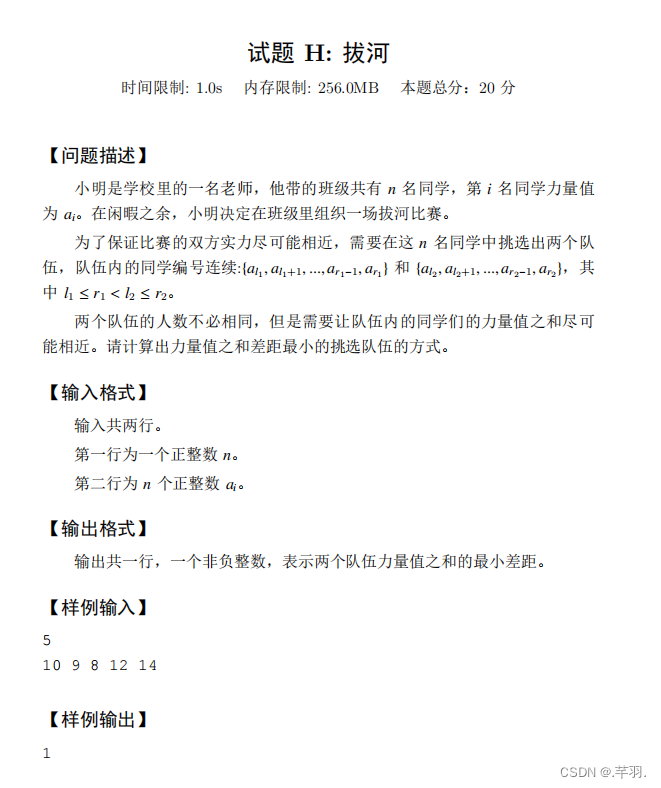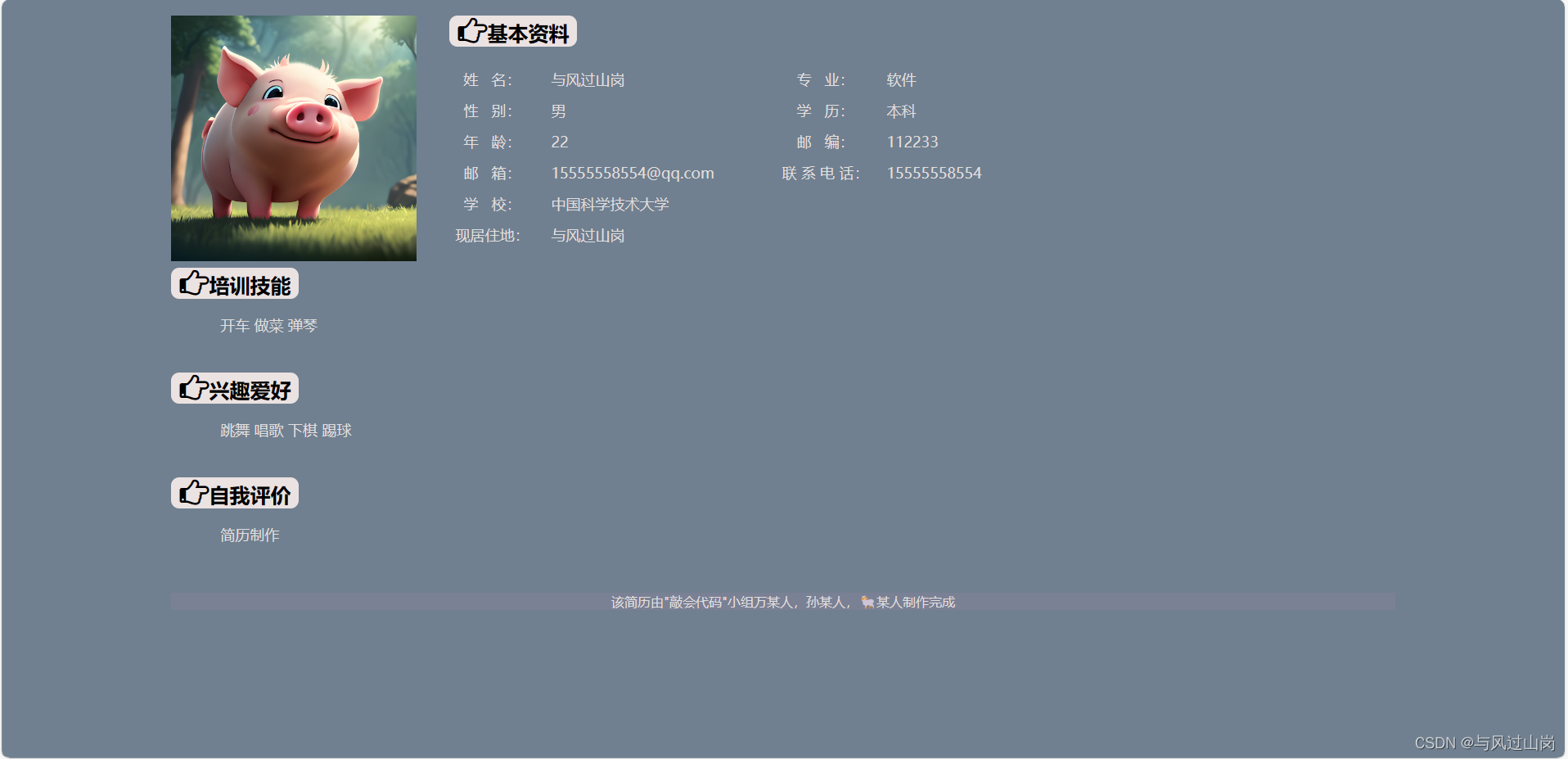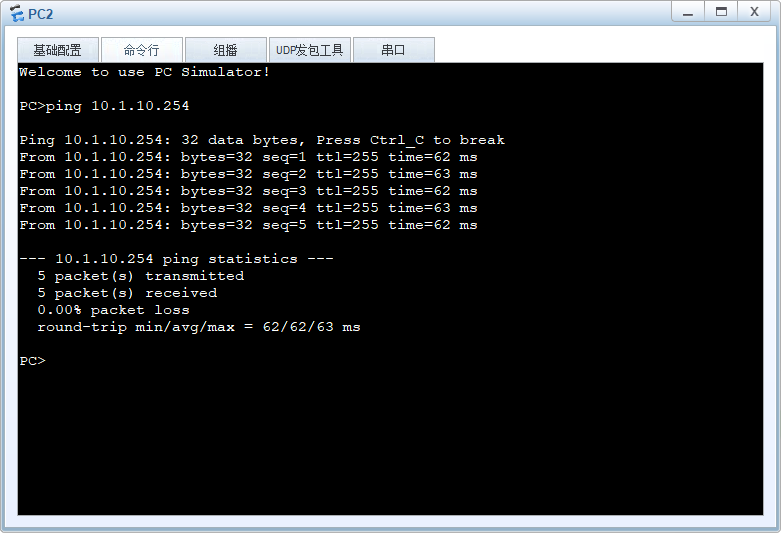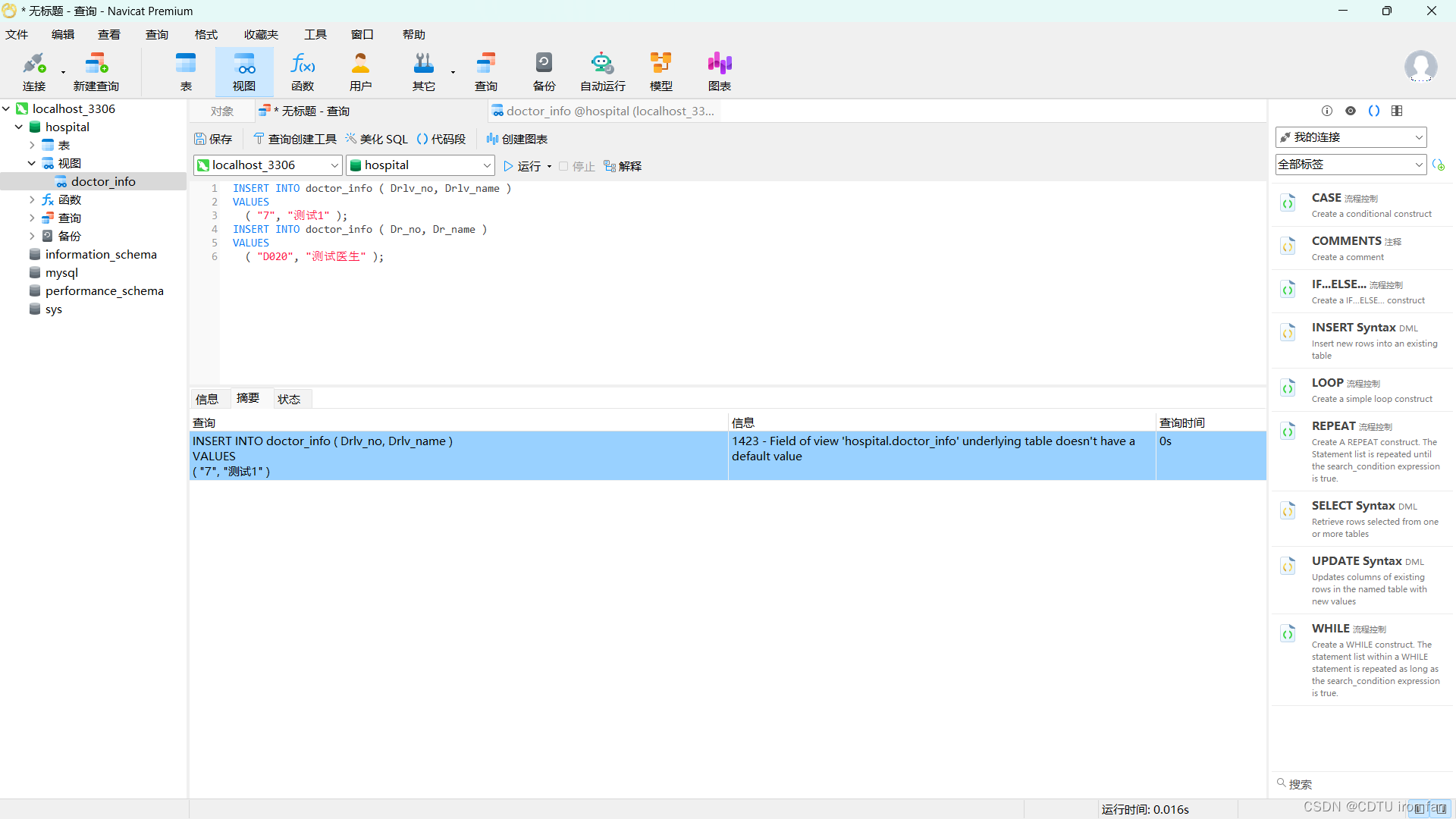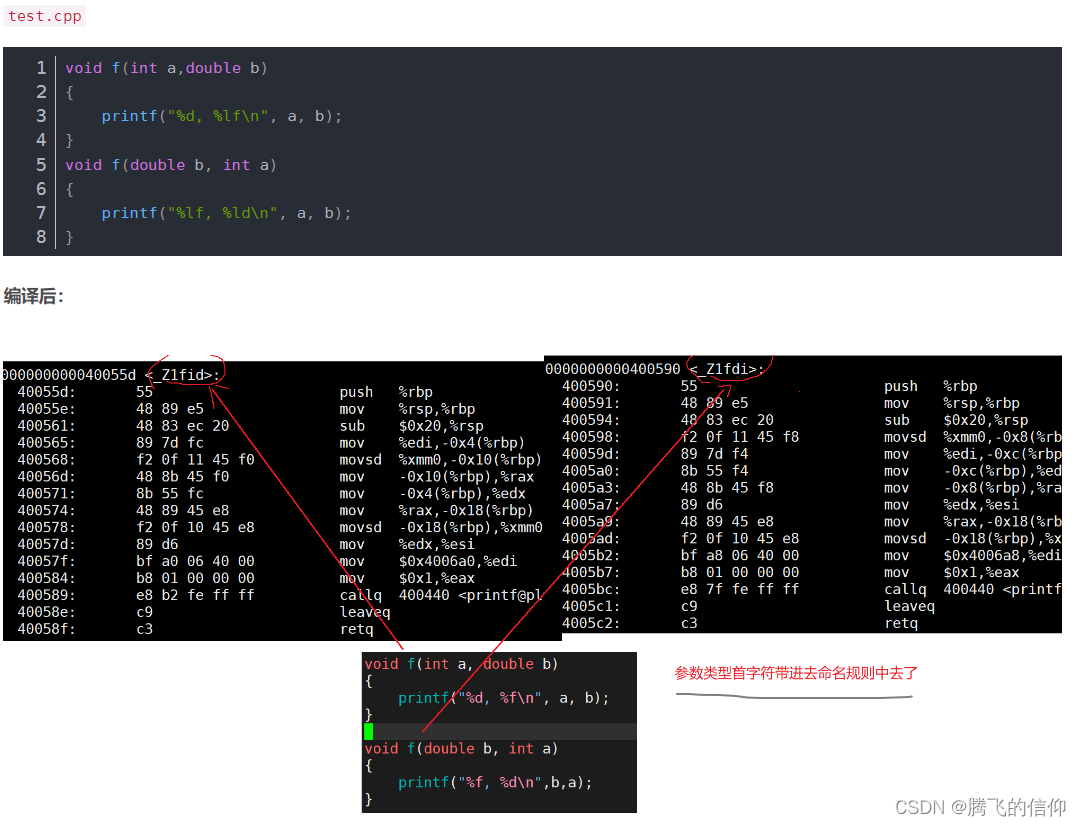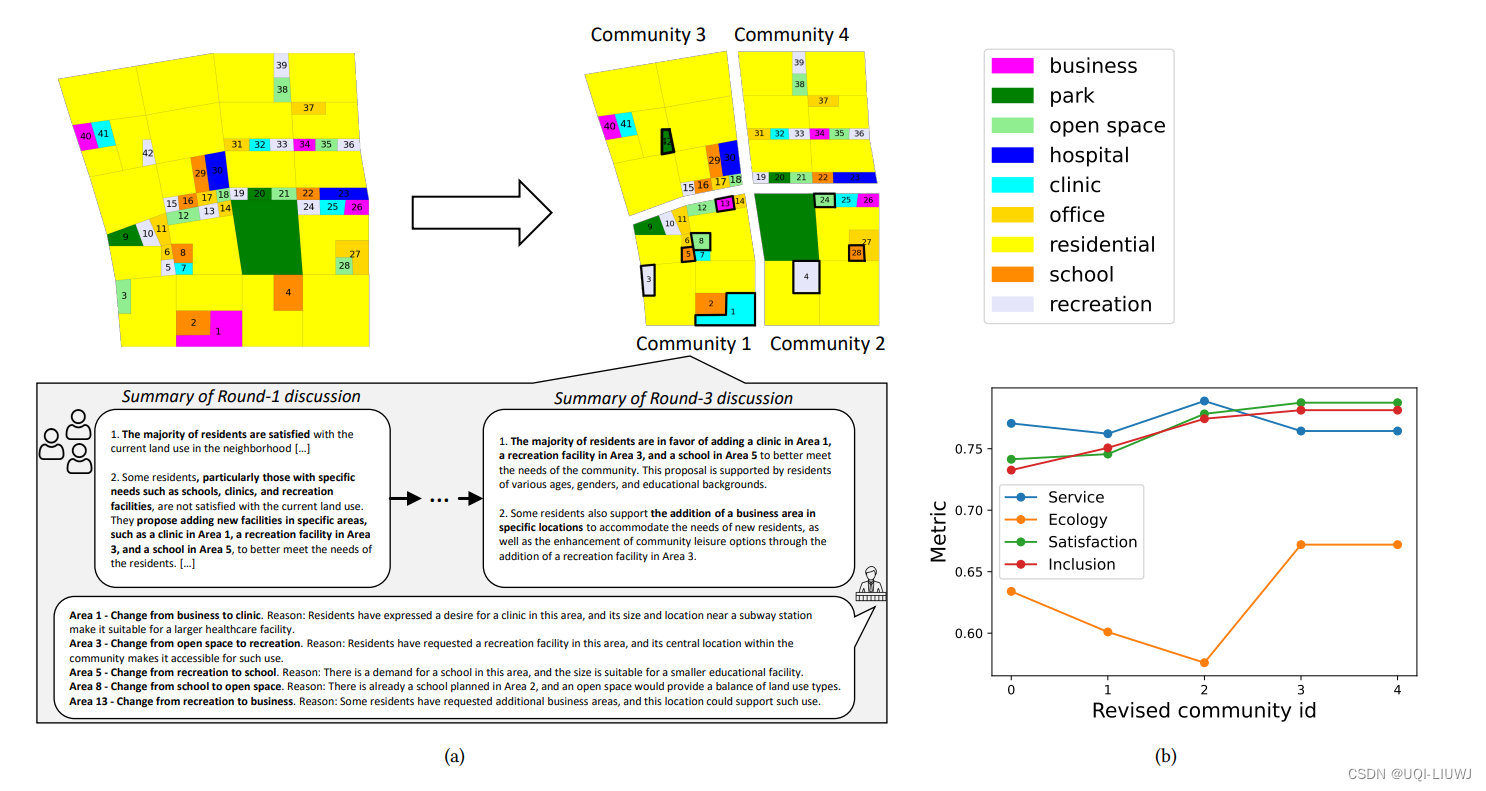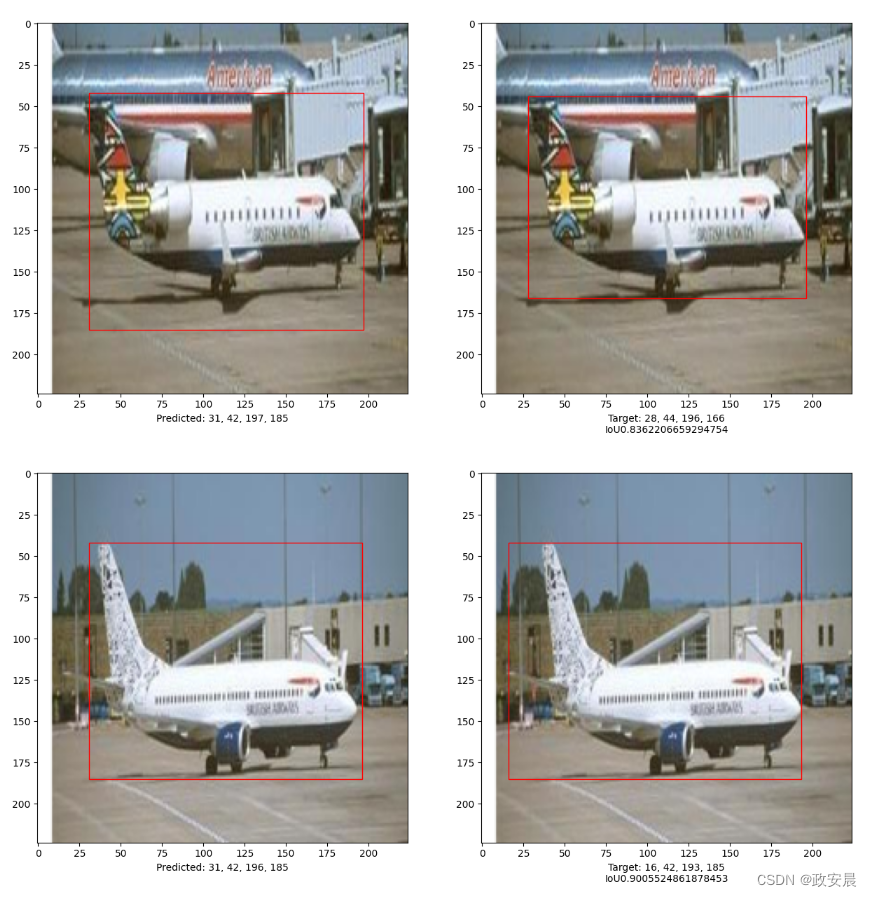构造函数、析构函数
#include <iostream>
using namespace std;
class Person
{
private:
int age;
public:
Person()
{
cout << "构造函数的调用,无参" << endl;
}
Person(int a)
{
age = a;
cout << "构造函数的调用, 含参" << endl;
}
Person(const Person& p)
{
this->age = p.age;
cout << "构造函数的调用,拷贝" << endl;
}
~Person()
{
cout << "析构函数的调用" << endl;
}
int getAge() { return age; }
};
void test()
{
Person p1;
Person p2 = Person(10);
Person p3 = Person(p2);
Person p4 = 10;
Person p5 = p4;
}
int main()
{
test();
}
初始化列表
#include <iostream>
using namespace std;
class Person
{
public:
int age;
int height;
Person(int a, int b) :age(a), height(b)
{
;
}
};
void test()
{
Person man(28, 180);
cout << man.age << endl << man.height << endl;
}
int main()
{
test();
}
常函数、常对象
#include <iostream>
using namespace std;
class Person
{
public:
void showPerson() const
{
age = 30;
height = 180;
}
void change()
{
age = 40;
height = 166;
}
int age;
mutable int height;
};
void test1()
{
Person p;
p.showPerson();
}
void test2()
{
const Person p;
p.age = 22;
p.height = 175;
p.showPerson();
p.change();
}
int main()
{
test1();
test2();
}
运算符重载
+ 运算符 重载
#include <iostream>
using namespace std;
class Person
{
public:
int age;
int height;
Person operator+(const Person &p)
{
Person temp;
temp.age = this->age + p.age;
temp.height = this->height + p.height;
return temp;
}
};
Person operator+(const Person& p1, const Person& p2)
{
Person temp;
temp.age = p1.age + p2.age;
temp.height = p1.height + p2.height;
return temp;
}
void test()
{
Person p1;
p1.age = 22;
p1.height = 166;
Person p2;
p2.age = 28;
p2.height = 134;
Person p3 = p1 + p2;
cout << p3.age << endl << p3.height << endl;
Person p3 = p3 + 66;
}
int main()
{
test();
}
<< 运算符 重载
#include <iostream>
using namespace std;
class Person
{
friend ostream& operator<<(ostream&, const Person&);
public:
Person(int age, int height) :age(age), height(height)
{
cout << "调用了构造函数" << endl;
}
private:
int age;
int height;
};
ostream& operator<<(ostream& cout, const Person& p)
{
cout << "[ age = " << p.age << ", height = " << p.height << " ]";
return cout;
}
void test()
{
Person p1(22, 166);
cout << p1 << endl;
}
int main()
{
test();
}
自增运算符 重载
#include <iostream>
using namespace std;
class MyInteger
{
friend ostream& operator<<(ostream&, MyInteger);
public:
MyInteger(int a) :num(a)
{
cout << "调用了构造函数" << endl;
}
// 前置递增
MyInteger& operator++()
{
num++;
return *this;
}
// 后置递增
MyInteger operator++(int) // int 代表占位参数,可以用于区分前置和后置递增
{
// 先记录当前结果
MyInteger temp = *this;
// 后将自己进行递增
num++;
return temp;
}
private:
int num;
};
ostream& operator<<(ostream& cout, MyInteger obj)
{
cout << obj.num;
return cout;
}
void test()
{
MyInteger myint = 0;
cout << ++(++myint) << endl; // 输出:2
cout << myint << endl; // 输出:2
cout << myint++ << endl; // 输出:2
cout << myint<< endl; // 输出:3
}
int main()
{
test();
}
赋值运算符 重载
#include <iostream>
using namespace std;
class Person
{
public:
Person(int age)
{
this->age = new int(age);
}
~Person()
{
if (age != NULL)
{
delete age;
age = NULL;
}
}
// 赋值运算符重载
Person& operator=(const Person& obj)
{
*age = *obj.age;
return *this;
}
int* age;
};
void test()
{
Person p1(10);
cout << "p1的年龄为:" << *p1.age << endl; // 输出结果:10
Person p2(20);
cout << "p2的年龄为:" << *p2.age << endl; // 输出结果:20
Person p3(30);
cout << "p3的年龄为:" << *p3.age << endl; // 输出结果:30
// 这不是拷贝构造函数,拷贝构造函数也是一种构造函数
// 这里是赋值语句,对象的赋值,编译器默认的行为是:将某对象的所有属性复制一份到另一个对象里面
// 因为默认行为的直接复制,对于需要浅拷贝的内容没什么影响,但是对于需要深拷贝的内容影响很大
// 为了避免恶劣影响,我们需要重载赋值运算符
p3 = p2 = p1;
cout << "修改后的p2的年龄为:" << *p2.age << endl; // 输出结果:10
cout << "修改后的p3的年龄为:" << *p3.age << endl; // 输出结果:10
}
int main()
{
test();
}
关系运算符 重载
#include <iostream>
#include <string>
using namespace std;
class Person
{
public:
string name;
int age;
Person(string name, int age) :name(name), age(age)
{
;
}
bool operator==(const Person& obj)
{
if (name == obj.name && age == obj.age)
{
return true;
}
return false;
}
bool operator!=(const Person& obj)
{
if (name == obj.name && age == obj.age)
{
return false;
}
return true;
}
};
void test()
{
Person p1("Jack", 18);
Person p2("Jack", 18);
Person p3("Tom", 18);
if (p1 == p2) cout << "p1 和 p2 相等" << endl;
if (p1 != p3) cout << "p1 和 p3 不相等" << endl;
}
int main()
{
test();
}
函数调用运算符 重载
#include <iostream>
#include <string>
using namespace std;
class MyPrint
{
public:
// 重载函数调用运算符
void operator()(string text, string end="\n")
{
cout << text << end;
}
};
class MyAdd
{
public:
// 重载函数调用运算符
int operator()(int a, int b)
{
return a + b;
}
};
void test()
{
MyPrint print;
MyAdd add;
print("hello world"); // 由于使用起来非常类似于函数调用,因此称为仿函数
string res = to_string(add(10, 20));
print(res);
// 匿名函数对象 -> MyAdd()
cout << MyAdd()(100, 100) << endl;
}
int main()
{
test();
}
继承知识补充
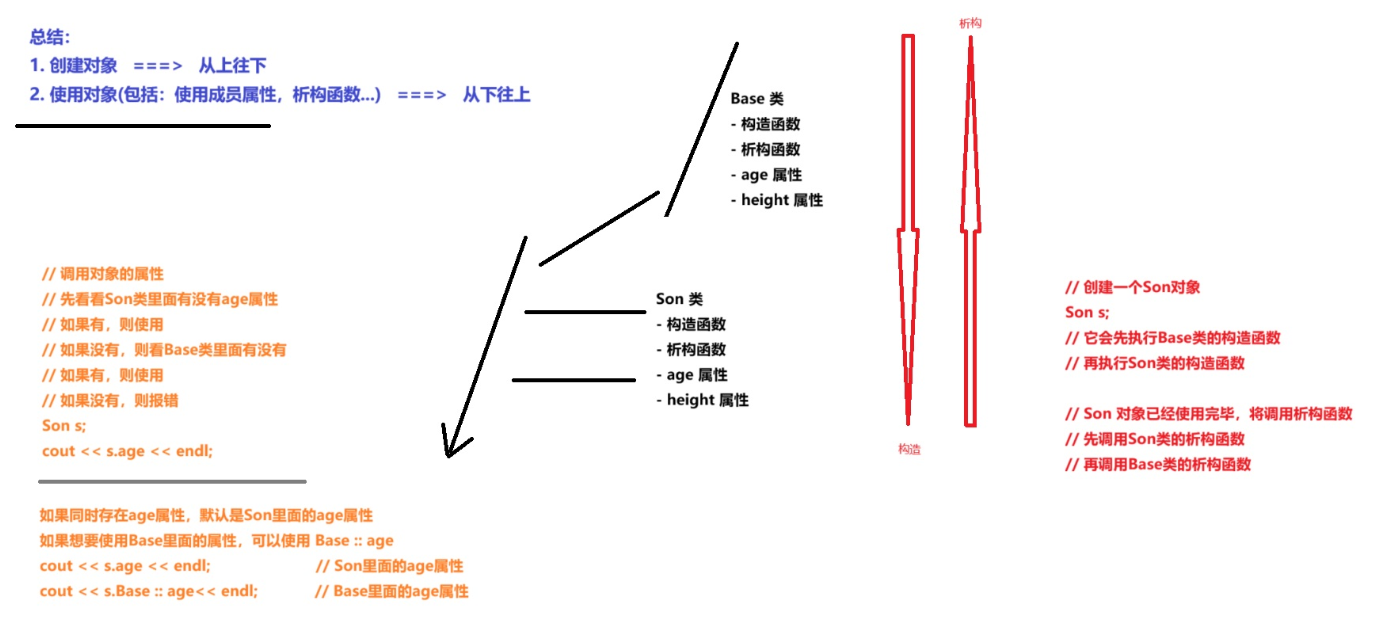
多态
基础应用
#include <iostream>
#include <string>
using namespace std;
class Animal
{
public:
virtual void speak()
{
cout << "动物在叫" << endl;
}
};
class Cat :public Animal
{
public:
void speak()
{
cout << "猫在叫" << endl;
}
};
class Dog :public Animal
{
public:
void speak()
{
cout << "狗在叫" << endl;
}
};
void doSpeak(Animal& animal)
{
animal.speak();
}
void test()
{
Cat cat;
Dog dog;
doSpeak(cat);
doSpeak(dog);
}
int main()
{
test();
}
进阶应用
#include <iostream>
#include <string>
using namespace std;
class abstractDrinking
{
public:
virtual void Boil() = 0;
virtual void Brew() = 0;
virtual void PourInCup() = 0;
virtual void PutSomething() = 0;
void make()
{
Boil();
Brew();
PourInCup();
PutSomething();
}
};
class Coffee :public abstractDrinking
{
public:
virtual void Boil()
{
cout << "煮熟自来水" << endl;
}
virtual void Brew()
{
cout << "冲泡咖啡" << endl;
}
virtual void PourInCup()
{
cout << "倒入迷你的咖啡杯中" << endl;
}
virtual void PutSomething()
{
cout << "加入一些糖" << endl;
}
};
class Tea :public abstractDrinking
{
public:
virtual void Boil()
{
cout << "煮熟矿泉水" << endl;
}
virtual void Brew()
{
cout << "冲泡茶叶" << endl;
}
virtual void PourInCup()
{
cout << "倒入经典的茶杯中" << endl;
}
virtual void PutSomething()
{
cout << "加入一些香料" << endl;
}
};
void makeDrink(abstractDrinking* drink)
{
drink->make();
delete drink;
}
void test()
{
makeDrink(new Coffee);
makeDrink(new Tea);
}
int main()
{
test();
}
高级应用 (经典)
#include <iostream>
#include <string>
using namespace std;
class CPU
{
public:
virtual void calculate() = 0;
};
class VideoCard
{
public:
virtual void display() = 0;
};
class Memory
{
public:
virtual void storage() = 0;
};
class IntelCPU :public CPU
{
public:
virtual void calculate()
{
cout << "Intel 的 CPU 开始工作了" << endl;
}
};
class IntelVideoCard :public VideoCard
{
public:
virtual void display()
{
cout << "Intel 的 VideoCard 开始工作了" << endl;
}
};
class IntelMemory :public Memory
{
public:
virtual void storage()
{
cout << "Intel 的 Memory 开始工作了" << endl;
}
};
class LenovoCPU :public CPU
{
public:
virtual void calculate()
{
cout << "Lenovo 的 CPU 开始工作了" << endl;
}
};
class LenovoVideoCard :public VideoCard
{
public:
virtual void display()
{
cout << "Lenovo 的 VideoCard 开始工作了" << endl;
}
};
class LenovoMemory :public Memory
{
public:
virtual void storage()
{
cout << "Lenovo 的 Memory 开始工作了" << endl;
}
};
class Computer
{
public:
Computer(CPU* cpu, VideoCard* vc, Memory* mem) : cpu(cpu), vc(vc), mem(mem)
{
;
}
void work()
{
cpu->calculate();
vc->display();
mem->storage();
}
~Computer()
{
if (cpu != NULL)
{
delete cpu;
cpu = NULL;
}
if (vc != NULL)
{
delete vc;
vc = NULL;
}
if (mem != NULL)
{
delete mem;
mem = NULL;
}
}
private:
CPU* cpu;
VideoCard* vc;
Memory* mem;
};
void test()
{
CPU* intelCpu = new IntelCPU;
VideoCard* intelCard = new IntelVideoCard;
Memory* intelMem = new IntelMemory;
Computer* computer1 = new Computer(intelCpu, intelCard, intelMem);
computer1->work();
delete computer1;
computer1 = NULL;
cout << "------------------------------" << endl;
Computer* computer2 = new Computer(new LenovoCPU, new LenovoVideoCard, new LenovoMemory);
computer2->work();
delete computer2;
computer2 = NULL;
cout << "------------------------------" << endl;
Computer* computer3 = new Computer(new IntelCPU, new LenovoVideoCard, new LenovoMemory);
computer3->work();
delete computer3;
computer3 = NULL;
}
int main()
{
test();
}
文件操作
#include <iostream>
#include <fstream>
#include <string>
using namespace std;
void writeText()
{
ofstream file;
file.open("test.txt", ios::app);
file << "姓名:张三" << endl;
file << "性别:男" << endl;
file << "年龄:28" << endl;
file.close();
}
void readText()
{
ifstream file;
file.open("test.txt", ios::in);
if (!file.is_open())
{
cout << "文件打开失败!" << endl;
return;
}
char c;
while ((c = file.get()) != EOF)
{
cout << c;
}
file.close();
}
class Person
{
public:
char m_Name[64];
int m_Age;
};
void writeBinary()
{
ofstream file;
file.open("person.txt", ios::out | ios::binary);
Person p = { "张三", 28 };
file.write((const char*)&p, sizeof(Person));
file.close();
}
void readBinary()
{
ifstream file;
file.open("person.txt", ios::in | ios::binary);
if (!file.is_open())
{
cout << "文件打开失败" << endl;
}
Person p;
file.read((char*)&p, sizeof(Person));
cout << "姓名:" << p.m_Name << "年龄:" << p.m_Age << endl;
file.close();
}
int main()
{
writeText();
readText();
writeBinary();
readBinary();
}
函数模板的重载
#include <iostream>
#include <string>
using namespace std;
class Person
{
public:
Person(string name, int age)
{
this->m_Name = name;
this->m_Age = m_Age;
}
string m_Name;
int m_Age;
};
template<typename T>
bool myCompare(T &a, T &b)
{
if (a == b) return true;
else return false;
}
template<>
bool myCompare(Person& p1, Person& p2)
{
if (p1.m_Name == p2.m_Name && p1.m_Age == p2.m_Age) return true;
else return false;
}
void test()
{
int a = 10;
int b = 10;
bool ret = myCompare(a, b);
cout << ret << endl;
Person p1("张三", 18);
Person p2("李四", 28);
bool res = myCompare(p1, p2);
cout << res << endl;
}
int main()
{
test();
}
类模板
#include <iostream>
#include <string>
using namespace std;
template<class Type1, class Type2 = int>
class Person
{
public:
Person(Type1 name, Type2 age)
{
this->m_Name = name;
this->m_Age = age;
}
void showPerson()
{
cout << "name: " << m_Name << " age: " << m_Age << endl;
}
Type1 m_Name;
Type2 m_Age;
};
void test()
{
Person<string, int> p1("张三", 18);
p1.showPerson();
Person<string> p2("李四", 28);
p2.showPerson();
}
int main()
{
test();
}
#include <iostream>
#include <string>
using namespace std;
template<class T1, class T2>
class Person
{
public:
Person(T1 name, T2 age)
{
this->m_Name = name;
this->m_Age = age;
}
void showPerson()
{
cout << "姓名:" << this->m_Name << " 年龄:" << this->m_Age << endl;
}
T1 m_Name;
T2 m_Age;
};
void printPerson1(Person<string, int> &p)
{
p.showPerson();
}
template<class T1, class T2>
void printPerson2(Person<T1, T2>& p)
{
p.showPerson();
}
template<class T>
void printPerson3(T& p)
{
p.showPerson();
}
void test()
{
Person<string, int> p1("张三", 28);
printPerson1(p1);
Person<string, int> p2("李四", 18);
printPerson2(p2);
Person<string, int> p3("王五", 38);
printPerson3(p3);
}
int main()
{
test();
}
类模板与继承
#include <iostream>
#include <string>
using namespace std;
// 类模板与继承
template <class T>
class Base
{
T m_Name;
};
// 必须要知道父类中的T类型,才能继承给子类
class Son : public Base<int>
{
};
void test1()
{
Son s1;
}
// 如果想灵活指定父类中T类型,子类也需要变类模板
template <class T1, class T2>
class Son2 : public Base<T2>
{
public:
Son2()
{
cout << "T1 的类型为:" << typeid(T1).name() << endl;
cout << "T2 的类型为:" << typeid(T2).name() << endl;
}
};
void test2()
{
Son2<int, char> s2;
}
int main()
{
test1();
test2();
}
类模板函数的类外实现
#include <iostream>
#include <string>
using namespace std;
template<class T1, class T2>
class Person
{
public:
Person(T1 name, T2 age);
void showPerson();
T1 m_Name;
T2 m_Age;
};
// 类模板成员的类外实现(构造函数)
template<class T1, class T2>
Person<T1, T2>::Person(T1 name, T2 age) :m_Name(name), m_Age(age)
{
cout << "构造函数被调用了" << endl;
}
// 类模板成员的类外实现(普通成员函数)
template<class T1, class T2>
void Person<T1, T2>::showPerson()
{
cout << "姓名:" << m_Name << "年龄:" << m_Age;
}
void test()
{
Person<string, int> p("Tom", 28);
}
int main()
{
test();
}
类模板分文件编写
问题:
类模板中成员函数创建时机是在调用阶段,导致分文件编写时链接不到
解决:
解决办法1:直接包含.cpp源文件
解决办法2:将声明和实现写到同一个文件中,并更改后缀名为.hpp,.hpp是约定的名称,并不是强制
#include <string>
using namespace std;
// 第一种解决方式:直接包含源文件
#include "person.cpp"
// 第二种解决方式:将.h和.cpp中的内容写在一起,将后缀名改为.hpp文件(约定俗成)
// #include "person.hpp"
void test()
{
Person<string, int> p("Tom", 28);
p.showPerson();
}
int main()
{
test();
}
#include <iostream>
#include "person.h"
// 类模板成员的类外实现(构造函数)
template<class T1, class T2>
Person<T1, T2>::Person(T1 name, T2 age) :m_Name(name), m_Age(age)
{
std::cout << "构造函数被调用了" << std::endl;
}
// 类模板成员的类外实现(普通成员函数)
template<class T1, class T2>
void Person<T1, T2>::showPerson()
{
std::cout << "姓名:" << m_Name << " 年龄:" << m_Age << std::endl;
}
#pragma once // 只要在头文件的最开始加入这条预处理指令,就能够保证头文件只被编译一次,防止头文件被重复引用
template<class T1, class T2>
class Person
{
public:
Person(T1 name, T2 age);
void showPerson();
T1 m_Name;
T2 m_Age;
};
类模板与友元
#include <iostream>
#include <string>
using namespace std;
template <class T1, class T2>
class Person;
template <class T1, class T2>
void printPerson2(Person<T1, T2> p)
{
cout << "姓名:" << p.m_Name << " 年龄:" << p.m_Age << endl;
}
template <class T1, class T2>
class Person
{
friend void printPerson(Person<T1, T2> p)
{
cout << "姓名:" << p.m_Name << " 年龄:" << p.m_Age << endl;
}
friend void printPerson2<>(Person<T1, T2> p);
public:
Person(T1 name, T2 age) :m_Name(name), m_Age(age)
{
cout << "成功构造了一个对象" << endl;
}
private:
T1 m_Name;
T2 m_Age;
};
void test()
{
Person<string, int> p1("Jack", 29);
printPerson(p1);
Person<string, int> p2("Tom", 30);
printPerson2(p2);
}
int main()
{
test();
}
模板案例
#include <iostream>
#include <string>
#include "MyArray.hpp"
using namespace std;
void test1()
{
MyArray<int> arr1(10);
MyArray<int> arr2 = arr1;
MyArray<int> arr3(20);
arr3 = arr1;
bool ret;
for (int i = 0; i < arr3.getCapacity(); i++)
{
ret = arr3.append(100 - i);
cout << ret << endl;
}
cout << "----------" << endl;
arr3.pop();
cout << arr3[9] << endl;
arr3[9] = 666;
cout << arr3[9] << endl;
}
class Person
{
public:
Person() {}
Person(string name, int age)
{
this->m_Name = name;
this->m_Age = age;
}
string m_Name;
int m_Age;
};
void test2()
{
MyArray<Person> arr(3);
Person p1("Jack", 25);
Person p2("Tom", 28);
Person p3("Jim", 29);
arr.append(p1);
arr.append(p2);
arr.append(p3);
for (int i = 0; i < arr.getCapacity(); i++)
{
cout << "姓名:" << arr[i].m_Name << "\t年龄:" << arr[i].m_Age << endl;
}
}
int main()
{
test1();
cout << "*-*-*-*-*-*-*-*-*-*-*-*-*-*-*-*-*-*" << endl;
test2();
system("pause");
return 0;
}
#pragma once
#include <iostream>
#include <string>
template <class T>
class MyArray
{
private:
T* pAddress;
int m_Capacity;
int m_Size;
public:
MyArray(int capacity)
{
this->m_Capacity = capacity;
this->m_Size = 0;
this->pAddress = new T[this->m_Capacity];
}
~MyArray()
{
if (this->pAddress != NULL)
{
delete[] this->pAddress;
this->pAddress = NULL;
}
}
MyArray(const MyArray& arr)
{
this->m_Capacity = arr.m_Capacity;
this->m_Size = arr.m_Size;
this->pAddress = new T[arr.m_Capacity];
for (int i = 0; i < arr.m_Size; i++)
{
this->pAddress[i] = arr.pAddress[i];
}
}
MyArray& operator=(const MyArray& arr)
{
if (this->pAddress != NULL)
{
delete[] this->pAddress;
this->pAddress = NULL;
this->m_Capacity = 0;
this->m_Size = 0;
}
this->m_Capacity = arr.m_Capacity;
this->m_Size = arr.m_Size;
this->pAddress = new T[arr.m_Capacity];
for (int i = 0; i < arr.m_Size; i++)
{
this->pAddress[i] = arr.pAddress[i];
}
return *this;
}
bool append(const T& value)
{
if (this->m_Size == this->m_Capacity) return false;
this->pAddress[m_Size] = value;
m_Size++;
return true;
}
void pop()
{
if (this->m_Size == 0) return;
m_Size--;
}
T& operator[](int index)
{
return this->pAddress[index];
}
int getSize()
{
return this->m_Size;
}
int getCapacity()
{
return this->m_Capacity;
}
};


